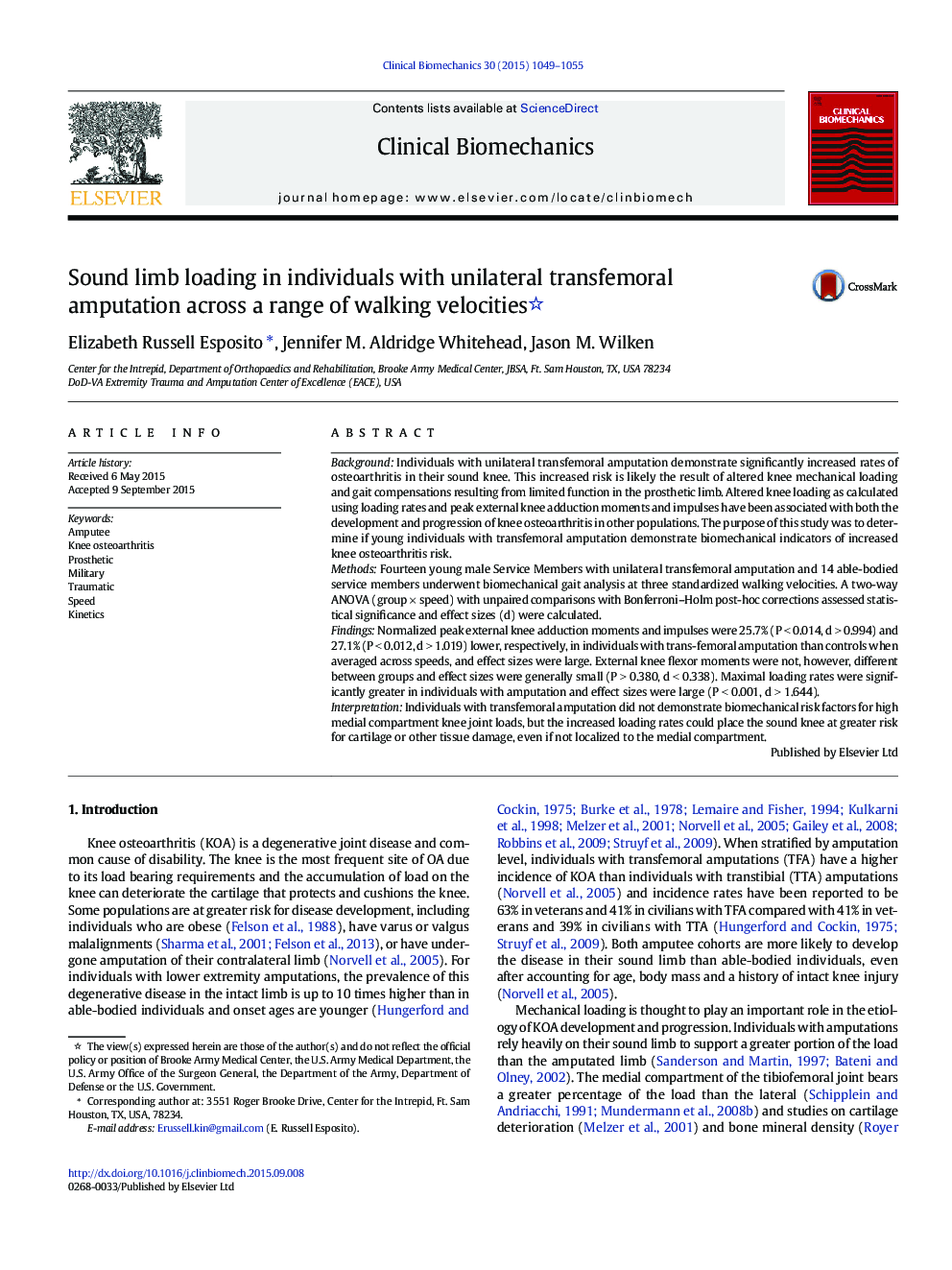| کد مقاله | کد نشریه | سال انتشار | مقاله انگلیسی | نسخه تمام متن |
|---|---|---|---|---|
| 4050069 | 1603748 | 2015 | 7 صفحه PDF | دانلود رایگان |
• Knee osteoarthritis is problematic in individuals with transfemoral amputation.
• Sound limb loading was assessed across three walking velocities.
• Peak external adductor moments and impulses were lower in amputees.
• Loading rates were greater for amputees than controls.
• Walking mechanics post-amputation may not relate to knee osteoarthritis risk.
BackgroundIndividuals with unilateral transfemoral amputation demonstrate significantly increased rates of osteoarthritis in their sound knee. This increased risk is likely the result of altered knee mechanical loading and gait compensations resulting from limited function in the prosthetic limb. Altered knee loading as calculated using loading rates and peak external knee adduction moments and impulses have been associated with both the development and progression of knee osteoarthritis in other populations. The purpose of this study was to determine if young individuals with transfemoral amputation demonstrate biomechanical indicators of increased knee osteoarthritis risk.MethodsFourteen young male Service Members with unilateral transfemoral amputation and 14 able-bodied service members underwent biomechanical gait analysis at three standardized walking velocities. A two-way ANOVA (group × speed) with unpaired comparisons with Bonferroni–Holm post-hoc corrections assessed statistical significance and effect sizes (d) were calculated.FindingsNormalized peak external knee adduction moments and impulses were 25.7% (P < 0.014, d > 0.994) and 27.1% (P < 0.012, d > 1.019) lower, respectively, in individuals with trans-femoral amputation than controls when averaged across speeds, and effect sizes were large. External knee flexor moments were not, however, different between groups and effect sizes were generally small (P > 0.380, d < 0.338). Maximal loading rates were significantly greater in individuals with amputation and effect sizes were large (P < 0.001, d > 1.644).InterpretationIndividuals with transfemoral amputation did not demonstrate biomechanical risk factors for high medial compartment knee joint loads, but the increased loading rates could place the sound knee at greater risk for cartilage or other tissue damage, even if not localized to the medial compartment.
Journal: Clinical Biomechanics - Volume 30, Issue 10, December 2015, Pages 1049–1055
